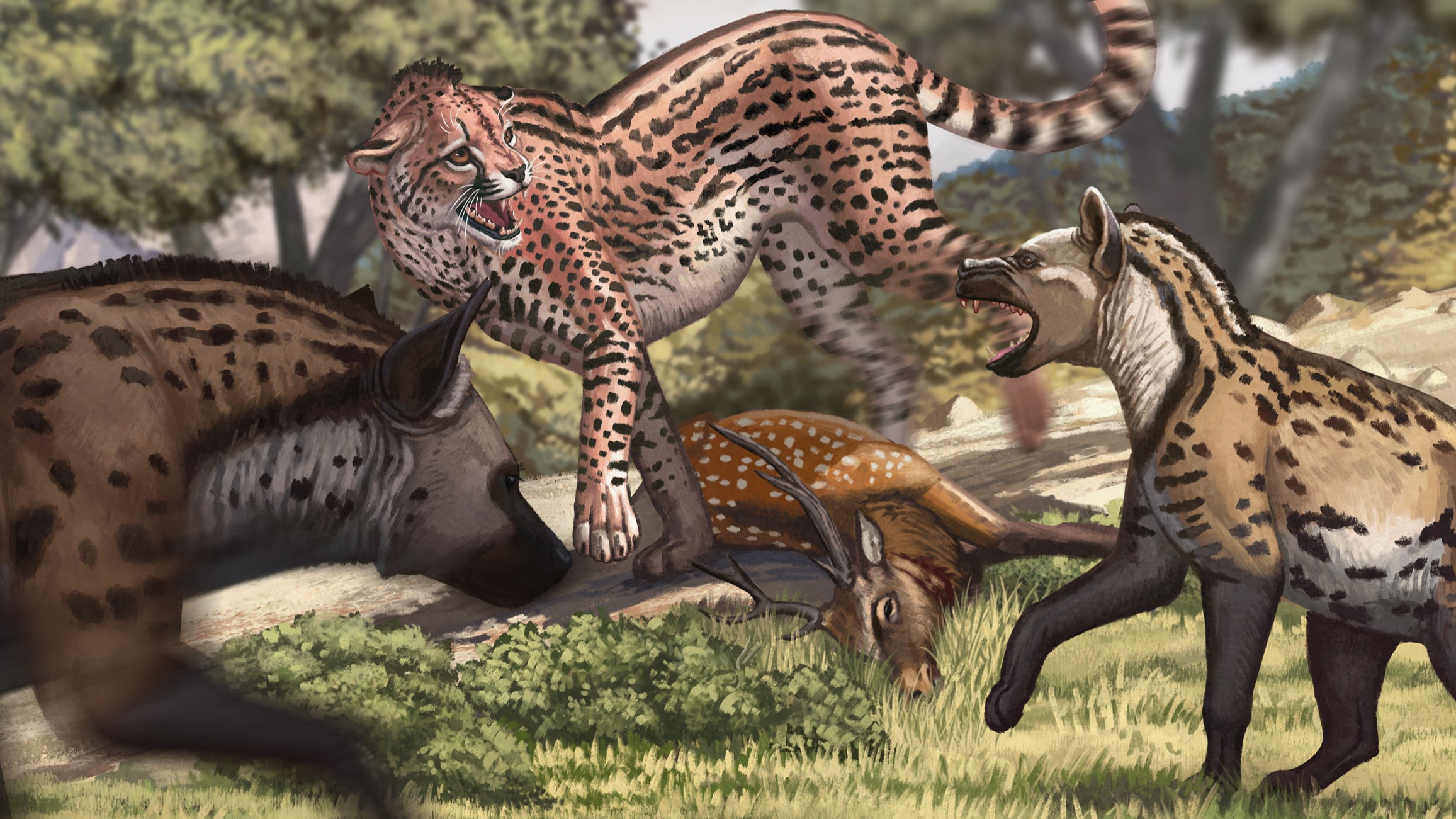
Scientists have revealed the world's largest-ever cheetah species after analyzing fossils of the behemoth creature's skull. The colossal predator was as heavy as the biggest cats alive today and more than three times as heavy as modern cheetahs.
The species, Acinonyx pleistocaenicus, roamed Eurasia from around 1.3 million to 500,000 years ago. It was first described in 1925, based on a partial lower jawbone, from Shanxi Province in northern China.
In the new study, researchers analyzed these remains along with more recently discovered fossils from China and estimated the animal's weight based on the length of the skull, height of the molar tooth and width of the bony structure that links the skull and spine — which is known to be an accurate predictor of body mass in mammals.
They found A. pleistocaenicus likely weighed more than 290 pounds (130 kilograms) and could reach 420 pounds (190 kg) — similar in size and weight to a modern-day tiger (Panthera tigris) or lion (Panthera leo). It was significantly heavier than modern African cheetahs (A. jubatus), which tip the scales at around 75 to 140 pounds (34 to 64 kilograms).
Related: Cheetahs battle raging river in stunning photo. Did they survive?
The newly analyzed fossils included two mandibles, or the upper jawbone, recovered in 2021 from Jinyuan Cave in Liaoning Province in northeastern China, and part of a cranium, originally recovered in 1930s from the Zhoukoudian Cave system in Beijing, which had previously been misidentified as a prehistoric hyena skull. All three specimens date to around 780,000 years ago, during the Pleistocene (2.6 million to 11,700 years ago).
The team identified these fossils as A. pleistocaenicus thanks to the animals' distinctive high, thick-walled skull and unusually wide snout, as well as other telltale features. The researchers also found that the extinct giant cheetahs had some remarkable similarities to modern African cheetahs. For example, the arrangement of the giant cheetahs' teeth and the bony space behind the nose match those uniquely seen in modern cheetahs.
The researchers described their findings in a study published in the May 15 edition of the journal Quaternary Science Reviews.
A. pleistocaenicus went extinct around 500,000 years ago. This massive cheetah's demise was likely influenced by climate change that occurred during the Mid-Pleistocene Transition, Qigao Jiangzuo, a paleontologist at the Chinese Academy of Sciences in Beijing, told Live Science. At this time, Earth switched from ice ages cycling every 41,000 years to a pattern of longer, stronger ice ages every 100,000 years, leading to longer and more intense periods of cold interrupted by longer periods of warmth.
At one of the sites, the researchers also identified another species of extinct cheetah, A. intermedius, which they think is a distinct species — not just a smaller descendant of A. pleistocaenicus. This indicates the hulking beast. A. pleistocaenicus was likely replaced by the smaller cheetah species.
"We hope our study can provide more information on the evolution and dispersal of the cheetah, highlighting the past success of this amazing lineage of cat in Eurasia," Jiangzuo said.







